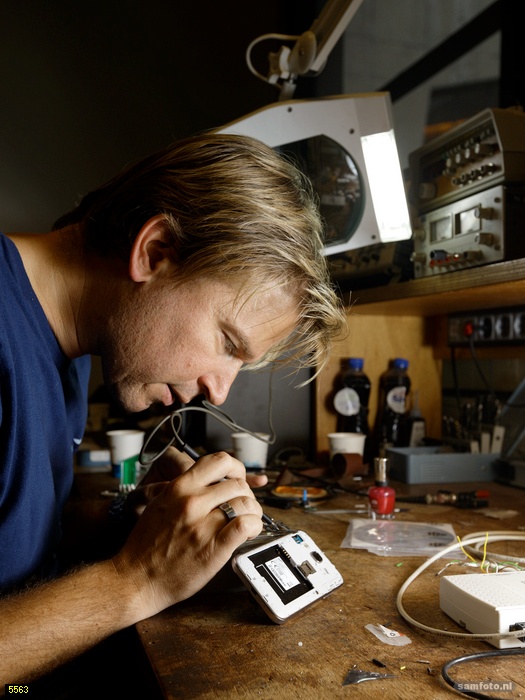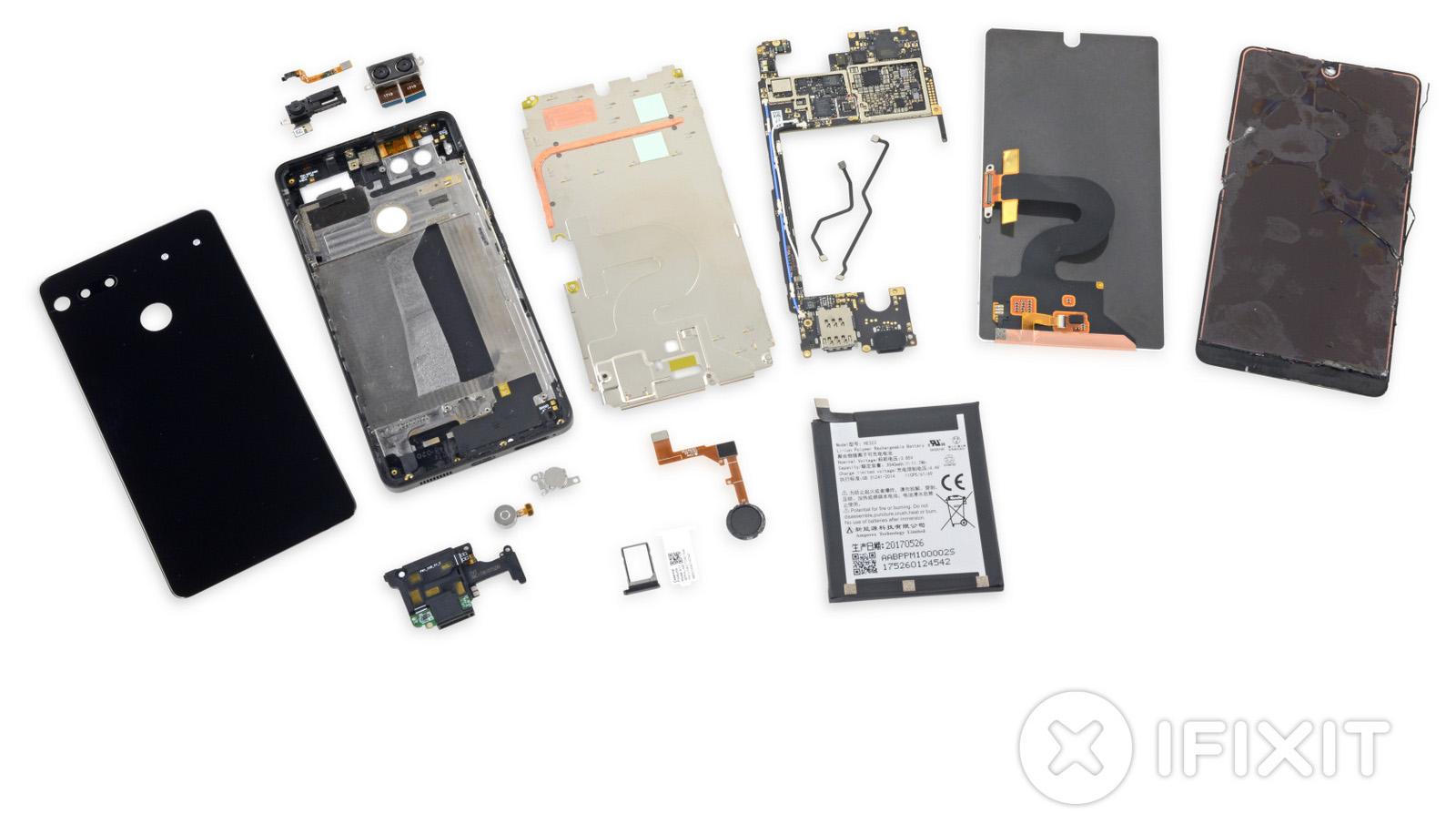Self-proclaimed geek Rolf Hut develops measuring equipment from consumer electronics. He loves smartphones, because they are packed with sensors.
According to Dr Rolf Hut (department of Water Resources, CEG), we are on the brink of a revolution. “Have you followed the news about the latest iPhone, the iPhone X? It has facial recognition technology. Scientists will develop apps to take advantage of this feature. That’s a given.”
If you can recognise faces, you can also recognise plants, birds and insects, the Delft researcher argues. Field work for biologists will never be the same.
“Biologists going into the field to make detailed drawings of a few plants will soon be a thing of the past. Soon you’ll send a whole class into the woods. With smartphones the class can identify all the flora and fauna in no time.”


The MacGyver researcher, as colleagues call Hut, makes measuring equipment from consumer electronics. For one of his first tricks he used sensors from the speakers of musical birthday cards. He transformed these parts into rain sensors that register falling raindrops.
Hut is now closely following developments in the smartphone industry. His field of research overlaps with virtually every branch of science that involves measuring and monitoring.
Agricultural technology is one such area. The technology behind Bluetooth beacons, which museums use to manage audio tours based on the pace of visitors, could help farmers to measure the soil humidity of their fields.
“We’re experimenting with this in our lab,” Hut explains. “The beacons broadcast a radio signal. Based on this signal, smartphone apps can perform specific tasks, such as providing an explanation about a work of art in a particular space. The apps determine the distance to the beacon. We buried a number of those beacons in sand. When we add water, this weakens the beacon signal. We can use this fact to also measure the percentage of moisture in the soil.”
Brainwave
It’s simple, but you have to come up with it. The same applies to the floats that travelled down the Irrawaddy in Myanmar early this year to measure the river’s dynamics. “We used large pieces of polystyrene on which we mounted GPS trackers that recorded their position to a local SD card every minute, and made contact every 15 minutes to upload their data. Basically, we used telephones, stripped down to prevent them from being stolen.”
Halfway through the interview, Hut dismantles a smartphone to point out various sensors. He’s busy with screwdrivers and pliers when he suddenly drops everything and runs to his computer. He’s had a brainwave.
“I need to work out whether we can do something with Siri, the iOS voice recognition program. I’ll send myself a reminder by email.”
Goldmine
“If you always have Siri enabled on your phone, which a lot of geeks do, your phone registers background noises continuously. These noises sound different when it rains. Who knows, we might be able to recognise that.”
Siri could be a goldmine. A classic example of big data mining using smartphones. According to Hut, this type of data analysis is really taking off.
One of Hut’s colleagues was recently able to obtain 220 million temperature measurements. Hut: “Phone batteries have tiny thermometers attached to prevent overheating. If a battery starts getting hot, it switches itself off. KNMI researcher Aart Overeem used measurements from these sensors to make heat maps for cities such as London, Paris, Moscow and Buenos Aires.”
Citizen science
Analysing data that are stored centrally is one of the methods of obtaining large quantities of data, which can be used to intricately chart things like temperature, noise, humidity and pollution. Another method is citizen science, in which you actively involve citizens in your research.
‘Ten years ago, sending data was a real bottleneck for a lot of measurements’
“I think the iSPEX measurement campaign, led by Frans Snik of Leiden University, is an excellent example of this. The aim of the project is to measure particulate matter in the atmosphere. Over the last few years, thousands of volunteers used their phones to take photographs of the sky on clean days. They did so using an attachment and an accompanying app that measures light spectrums. The idea behind it is that certain colours of light do not penetrate the atmosphere as deeply because they are absorbed by particulate matter.”
Supercomputers
According to Hut, “today’s phones are supercomputers.” And as an added bonus you can use them to make calls or send information. Of course, that seems rather obvious. “Nevertheless, the strength of virtually all applications lies in the fact that smartphones combine sensors with telemetry,” says Hut.
“Ten years ago, sending data was a real bottleneck for a lot of measurements. You had to install GSM modems on site – in fields, along rivers or in cities – in order to transmit the measurements. You needed people with a background in electrical engineering to get the modems up and running, and it was a major job thirty years ago. You had to lay cables and make arrangements with the phone company. Now you simply throw your telephone with sensors into the river.”



Comments are closed.